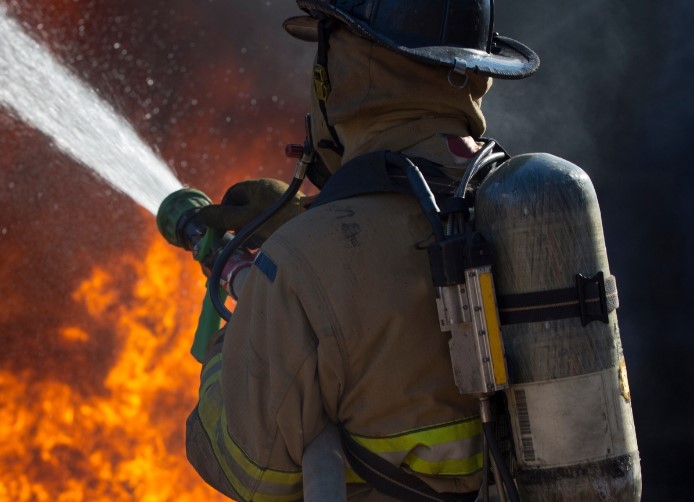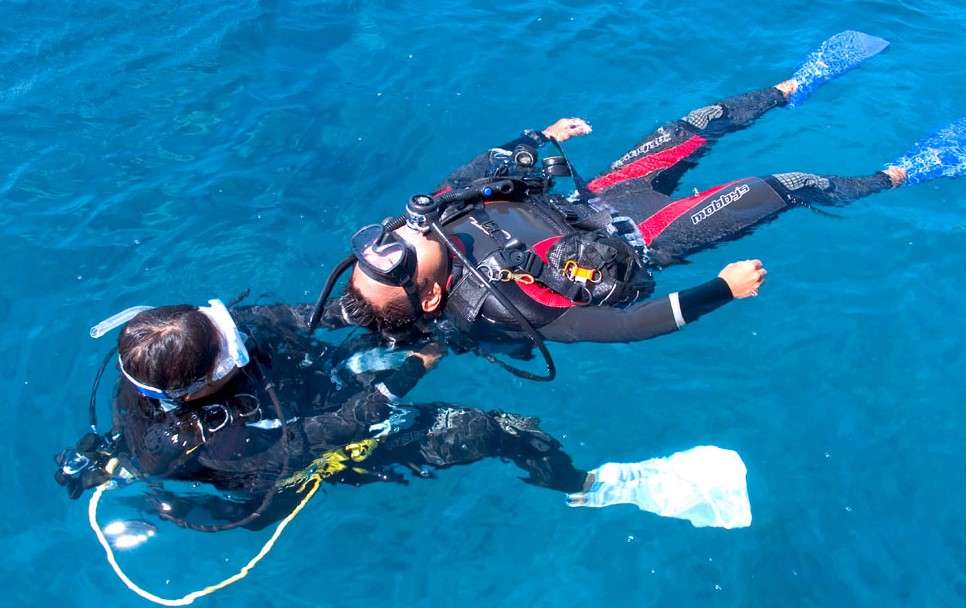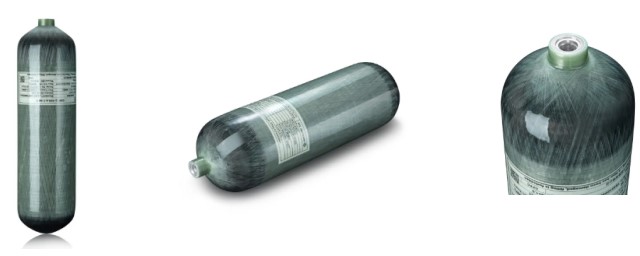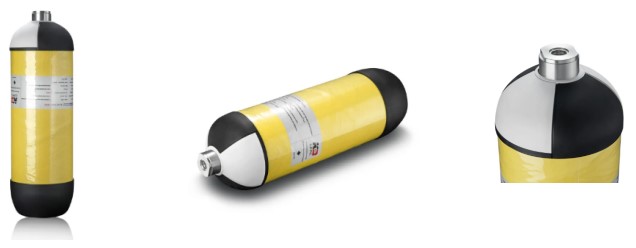When it comes to air supply systems, two acronyms often come up: SCBA (Self-Contained Breathing Apparatus) and SCUBA (Self-Contained Underwater Breathing Apparatus). While both systems provide breathable air and rely on similar technology, they are designed for very different environments and purposes. This article will explore the key differences between SCBA and SCUBA cylinders, focusing on their applications, materials, and the role of carbon fiber composite cylinders in enhancing performance.
SCBA Cylinders: Purpose and Applications
Purpose:
SCBA systems are primarily used by firefighters, rescue personnel, and industrial workers who need a reliable source of air in hazardous environments. Unlike SCUBA, SCBA is not designed for underwater use but rather for situations where the ambient air is contaminated with smoke, toxic gases, or other dangerous substances.
Applications:
-Firefighting: Firefighters use SCBA systems to breathe in smoke-filled environments safely.
-Rescue Operations: Rescue teams employ SCBA during operations in confined spaces or hazardous areas, such as chemical spills or industrial accidents.
-Industrial Safety: Workers in industries like chemical manufacturing, mining, and construction use SCBA for protection against harmful airborne particles and gases.
SCUBA Cylinders: Purpose and Applications
Purpose:
SCUBA systems are designed for underwater use, providing divers with a portable air supply to breathe comfortably while submerged. SCUBA cylinders allow divers to explore marine environments, conduct underwater research, and perform various underwater tasks safely.
Applications:
-Recreational Diving: SCUBA diving is a popular recreational activity, allowing enthusiasts to explore coral reefs, shipwrecks, and marine life.
-Commercial Diving: Professionals in the oil and gas industry, underwater construction, and salvage operations use SCUBA systems for underwater tasks.
-Scientific Research: Marine biologists and researchers rely on SCUBA systems for studying marine ecosystems and conducting underwater experiments.
Key Differences Between SCBA and SCUBA Cylinders
Although SCBA and SCUBA cylinders share some similarities, such as their reliance on compressed air, there are notable differences between the two, which can be attributed to their distinct applications and environments:
| Feature | SCBA | SCUBA |
|---|---|---|
| Environment | Hazardous, non-breathable air | Underwater, breathable air |
| Pressure | Higher pressure (3000-4500 psi) | Lower pressure (typically 3000 psi) |
| Size & Weight | Larger and heavier due to more air | Smaller, optimized for underwater use |
| Air Duration | Short duration (30-60 minutes) | Longer duration (up to several hours) |
| Material | Often carbon fiber composites | Primarily aluminum or steel |
| Valve Design | Quick-connect and disconnect | DIN or yoke valve for secure connection |
1. Environment:
-SCBA Cylinders: SCBA systems are used in environments where the air is unbreathable due to smoke, chemical fumes, or other toxic substances. These cylinders are not designed for underwater use but are essential for providing breathable air in life-threatening situations on land.
-SCUBA Cylinders: SCUBA systems are specifically designed for underwater use. Divers rely on SCUBA cylinders to supply air while exploring ocean depths, caves, or wrecks. The cylinders must be resistant to water pressure and corrosion, making them suitable for prolonged exposure to underwater conditions.
2. Pressure:
-SCBA Cylinders: SCBA cylinders operate at higher pressures, typically between 3000 to 4500 psi (pounds per square inch). The higher pressure allows for more compressed air storage, crucial for emergency responders who need a reliable air supply in high-stress situations.
-SCUBA Cylinders: SCUBA cylinders generally operate at lower pressures, usually around 3000 psi. While SCUBA systems also require sufficient air storage, the lower pressure is adequate for underwater breathing, where the focus is on maintaining buoyancy and safety.
3. Size & Weight:
-SCBA Cylinders: Due to the need for a substantial air supply, SCBA cylinders are often larger and heavier than their SCUBA counterparts. This size and weight provide a higher volume of compressed air, essential for firefighters and rescue personnel working in environments where quick air supply is critical.
-SCUBA Cylinders: SCUBA cylinders are optimized for underwater use, emphasizing lightweight and streamlined designs. Divers need cylinders that are easy to carry and maneuver while submerged, ensuring comfort and mobility during long dives.
4. Air Duration:
-SCBA Cylinders: The duration of air supply in SCBA systems is typically shorter, ranging from 30 to 60 minutes, depending on the cylinder’s size and pressure. This limited duration is due to the high oxygen consumption rate during physically demanding rescue or firefighting operations.
-SCUBA Cylinders: SCUBA cylinders offer longer air durations, often extending to several hours. Divers can enjoy extended exploration time underwater, thanks to efficient air management and conservation techniques employed during dives.
5. Material:
-SCBA Cylinders: Modern SCBA cylinders are often made from carbon fiber composites, which offer a high strength-to-weight ratio. This material significantly reduces the cylinder’s weight while maintaining its durability and ability to withstand high pressures. Carbon fiber composites also provide corrosion resistance, essential for SCBA cylinders that may be exposed to harsh chemicals or environmental conditions.
-SCUBA Cylinders: SCUBA cylinders are traditionally made from aluminum or steel. While aluminum cylinders are lighter and more resistant to corrosion, steel cylinders provide greater strength and capacity. However, the weight of these materials can be a drawback for divers who prioritize ease of movement and buoyancy.
6. Valve Design:
-SCBA Cylinders: SCBA systems often feature quick-connect and disconnect valve designs, allowing emergency responders to rapidly attach or detach the air supply as needed. This functionality is vital for situations where time is of the essence, such as firefighting or rescue operations.
-SCUBA Cylinders: SCUBA systems use either DIN or yoke valves, which provide secure connections to the regulator. The valve design is critical for maintaining a safe and reliable air supply during dives, preventing leaks and ensuring proper functionality underwater.
The Role of Carbon Fiber Composite Cylinders in SCBA and SCUBA Systems
Carbon fiber composite cylinders have revolutionized both SCBA and SCUBA systems, offering a range of benefits that enhance performance, safety, and user experience. These advanced materials have become increasingly popular due to their unique properties, making them a preferred choice in various applications.
Advantages of Carbon Fiber Composite Cylinders:
1.Lightweight: Carbon fiber composites are significantly lighter than traditional materials like steel or aluminum. This reduced weight is particularly advantageous for SCBA users, who need to carry heavy equipment during firefighting or rescue missions. Similarly, SCUBA divers benefit from lighter cylinders that reduce fatigue and improve buoyancy control.
2.High Strength: Despite their lightweight nature, carbon fiber composite cylinders offer exceptional strength and durability. They can withstand high pressures and harsh environmental conditions, ensuring reliability in critical situations.
3.Corrosion Resistance: Carbon fiber composites are highly resistant to corrosion, making them suitable for use in challenging environments where exposure to chemicals or moisture is common. This resistance extends the lifespan of the cylinders, reducing maintenance costs and enhancing safety.
4.Enhanced Safety: The robust construction of carbon fiber composite cylinders minimizes the risk of failure or leaks, providing users with peace of mind in hazardous or underwater environments. The material’s ability to absorb impact also contributes to overall safety.
5.Customization: Carbon fiber composite cylinders can be customized to meet specific requirements, offering tailored solutions for different applications. This flexibility allows manufacturers to design cylinders that optimize performance and user comfort.
Innovations and Future Trends in Cylinder Technology
As technology continues to evolve, innovations in cylinder design and materials are poised to shape the future of SCBA and SCUBA systems. Here are some trends to watch:
1.Advanced Composites: Researchers are exploring new composite materials that offer even greater strength and weight reduction, further enhancing the performance of SCBA and SCUBA cylinders.
2.Smart Sensors: Integrating sensors into cylinders can provide real-time data on air pressure, usage, and environmental conditions, offering valuable insights for users and enhancing safety.
3.Integrated Monitoring Systems: Future cylinders may include integrated monitoring systems that connect with wearable devices, providing users with critical information and alerts during operations or dives.
4.Sustainability: As environmental concerns grow, manufacturers are focusing on sustainable production methods and recyclable materials, ensuring that cylinder technology aligns with eco-friendly practices.
Conclusion
In summary, while SCBA and SCUBA cylinders serve different purposes, both rely on advanced materials like carbon fiber composites to deliver optimal performance and safety. Understanding the differences between these systems, including their applications, design, and material choices, is essential for professionals and enthusiasts alike. As technology advances, the continued development of innovative cylinder solutions promises to enhance safety, efficiency, and user experience in both hazardous environments and underwater adventures.
Post time: Aug-09-2024




